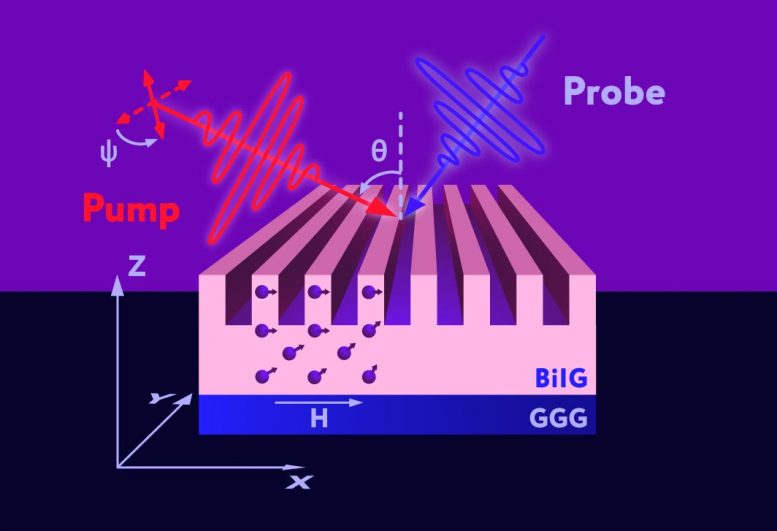
Physicists from MIPT and the Russian Quantum Center, joined by colleagues from Saratov State University and Michigan Technological University, have demonstrated new methods for controlling spin waves in nanostructured bismuth iron garnet films via short laser pulses.
Unlike the electrical current, spin wave propagation does not involve a transfer of matter. As a result, using magnons rather than electrons to transmit information leads to much smaller thermal losses. Data can be encoded in the phase or amplitude of a spin wave and processed via wave interference or nonlinear effects.
One of the challenges of implementing this new technology is the need to control certain spin wave parameters.
The researchers excited spin waves in a nanostructured bismuth iron garnet. Even without nanopatterning, that material has unique optomagnetic properties. It is characterized by low magnetic attenuation, allowing magnons to propagate over large distances even at room temperature. It is also highly optically transparent in the near infrared range and has a high Verdet constant.
The film used in the study had an elaborate structure: a smooth lower layer with a one-dimensional grating formed on top, with a 450-nanometer period (fig. 1). This geometry enables the excitation of magnons with a very specific spin distribution, which is not possible for an unmodified film.
To excite magnetization precession, the team used linearly polarized pump laser pulses, whose characteristics affected spin dynamics and the type of spin waves generated. Importantly, wave excitation resulted from optomagnetic rather than thermal effects.
The solution has potential applications in energy-efficient information transfer and spin-based quantum computing. (SciTechDaily)
The research has been presented in Nano Letters.
